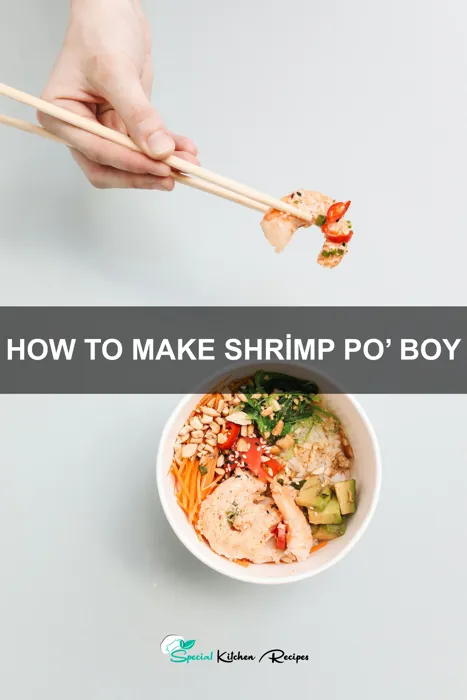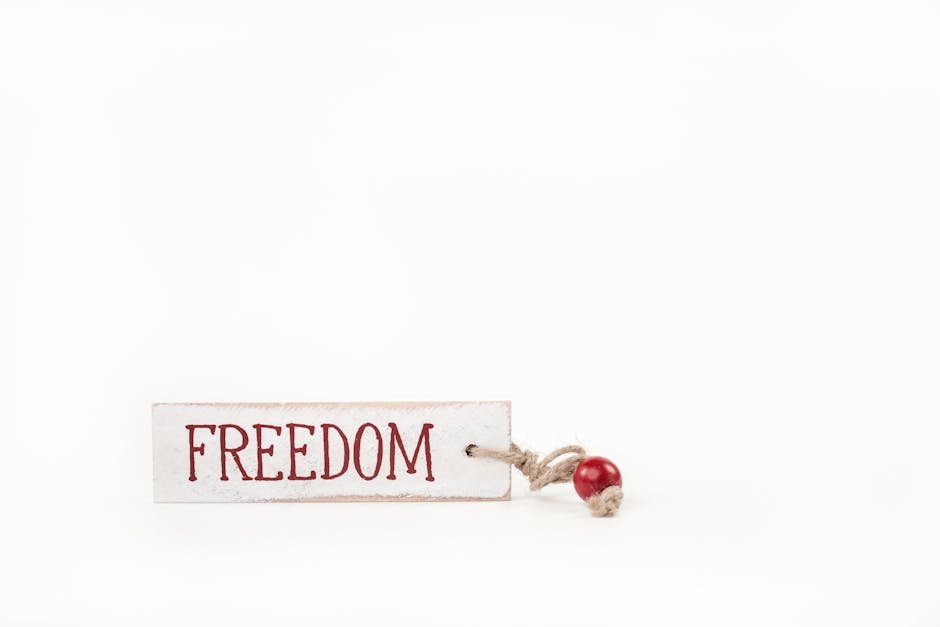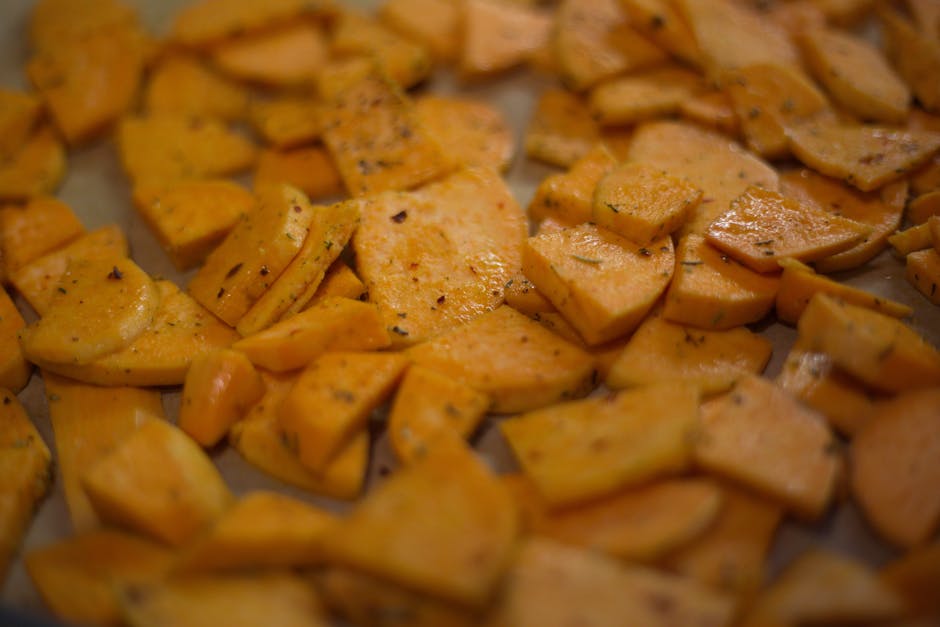The New Orleans Po’ Boy sandwich, a culinary icon of Louisiana, boasts a rich history interwoven with the city’s vibrant culture. Its name, surprisingly, originates not from celebratory praise, but rather from a labor dispute. In the early 1900s, during a streetcar workers’ strike, the DeBlando brothers, owners of a New Orleans restaurant, decided to show solidarity by providing free sandwiches to the striking workers. These generous offerings, initially filled with inexpensive ingredients like roast beef, were dubbed Poor Boy sandwiches, eventually shortened to Po’ Boys. Over time, the sandwich evolved, its simplicity a testament to its enduring appeal.
While the original Po’ Boy featured roast beef, the shrimp Po’ Boy emerged as a beloved variant, reflecting Louisiana’s proximity to the Gulf of Mexico and its abundant seafood resources. The exact origins of the shrimp Po’ Boy are less documented than the original, but its popularity quickly rivaled, and in some regions surpassed, its beef counterpart. The Gulf Coast’s bounty of shrimp, easily caught and readily available, made it a natural filling, perfectly complementing the soft, crusty bread and flavorful sauces. Today, the shrimp Po’ Boy is considered a quintessential New Orleans experience, attracting millions of tourists annually and contributing significantly to the city’s economy.
The cultural significance of the Po’ Boy, and the shrimp version in particular, extends beyond its deliciousness. It represents a core element of Louisiana’s culinary identity, reflecting the state’s unique blend of French, African, and American influences. The sandwich is a staple at festivals, local eateries, and high-end restaurants alike, a testament to its versatility and broad appeal. While precise sales figures for shrimp Po’ Boys are difficult to obtain, their popularity is undeniable, with countless restaurants across Louisiana and beyond featuring their own variations on this classic. The sandwich is more than just a meal; it’s a symbol of New Orleans’ spirit, resilience, and its unwavering commitment to delicious, accessible food.
Ingredients and Measurements
This recipe yields approximately 4 delicious Shrimp Po’ Boys. Accurate measurements are key to achieving the perfect balance of flavors and textures. Use a kitchen scale for the most precise results, especially when measuring the flour for the batter.
For the Shrimp:
- 1 pound large shrimp (21-25 count per pound), peeled and deveined. Ensure the shrimp are thoroughly cleaned and patted dry before cooking; this prevents excess moisture in the batter.
- 1 teaspoon salt
- 1/2 teaspoon black pepper
- 1/2 teaspoon paprika
- 1/4 teaspoon cayenne pepper (optional, for a little heat)
- 1/4 cup all-purpose flour
For the Batter:
- 1 cup all-purpose flour
- 1 teaspoon baking powder
- 1/2 teaspoon salt
- 1/2 teaspoon black pepper
- 1/2 cup buttermilk
- 1/4 cup club soda or sparkling water (this adds lightness and crispness to the batter)
- 1 large egg, lightly beaten
- Vegetable oil, for frying (approximately 2 cups)
For the Po’ Boy Assembly:
- 4 crusty French rolls, split lengthwise
- 1/2 cup mayonnaise
- 1/4 cup shredded lettuce
- 1/4 cup thinly sliced tomatoes
- 1/4 cup thinly sliced pickles (dill pickles are traditional)
- Optional: Hot sauce, remoulade sauce
Important Notes on Ingredients: Using high-quality ingredients will significantly enhance the flavor of your Shrimp Po’ Boys. Choose fresh, firm shrimp for the best results. If using frozen shrimp, ensure they are completely thawed and patted dry before seasoning and breading. The type of French roll you select also impacts the overall experience – a crusty, slightly chewy roll is ideal.
Measurement Precision: While some ingredients allow for slight adjustments based on personal preference (like the cayenne pepper), precise measurements for the batter are crucial. Using a kitchen scale to measure the flour will help ensure consistent results every time. Too much flour will result in a heavy, dense batter, while too little will produce a batter that is too thin and may not adhere to the shrimp properly.
Equipment and Utensils
Making a delicious Shrimp Po’ Boy requires the right tools to ensure efficient and successful preparation. While you might already have most of these items in your kitchen, having them readily available will streamline the cooking process. Let’s go through the essential equipment and utensils you’ll need.
For prepping the shrimp, you’ll need a large bowl (at least 4-quart capacity) for marinating and tossing the shrimp. A medium bowl is also helpful for whisking together the dredging ingredients. A set of measuring cups and spoons is crucial for accurate ingredient measurements, particularly when it comes to spices and seasonings. Tongs are invaluable for gently handling the shrimp during cooking and transferring them to the rolls. A sharp knife is essential for properly cleaning and deveining the shrimp, if necessary, and for cutting the vegetables.
Cooking the shrimp requires specific equipment. A large skillet (12-inch diameter or larger) is ideal for ensuring even cooking, especially if you’re cooking in batches. A heavy-bottomed skillet is preferred as it distributes heat more evenly, preventing burning. High heat-resistant cooking oil, such as vegetable or canola oil, is necessary, with approximately 2 tablespoons being sufficient for a typical batch of shrimp. A spatula or fish turner is perfect for flipping the shrimp and ensuring they cook evenly without breaking. A kitchen thermometer can be helpful for monitoring the oil temperature if you are deep frying, ensuring it reaches the optimal temperature (around 350°F or 175°C).
For assembling the Po’ Boys, you’ll need a baking sheet or wire rack to keep the cooked shrimp warm while you prepare the other components. French bread rolls, typically 6-8 inches long, are essential. A butter knife or small spatula is useful for spreading the mayonnaise or remoulade sauce evenly on the rolls. Finally, paper towels are essential for draining any excess oil from the cooked shrimp before assembling the sandwiches. Having all these items prepared beforehand will make the entire cooking process smoother and more efficient, allowing you to focus on creating the perfect Shrimp Po’ Boy.
Professional Recommendation: Invest in a good quality, heavy-bottomed skillet. This will make a significant difference in the even cooking of your shrimp and prevent sticking.
Shrimp Preparation (Cleaning & Marinating)
Before you begin cooking your delicious shrimp Po’ Boy, proper preparation is key. This section details how to clean and marinate your shrimp for optimal flavor and texture.
Choosing your shrimp: For the best results, opt for fresh, raw shrimp, ideally 16/20 count (16 to 20 shrimp per pound). Larger shrimp can be used, but smaller shrimp will cook faster and more evenly. Ensure the shrimp are firm and have a pleasant, fresh seafood aroma. Avoid any shrimp that smell fishy or have discoloration.
Cleaning the Shrimp: If your shrimp have their heads and shells on, you’ll need to remove them. To devein, use a small, sharp knife to make a shallow cut along the back of each shrimp. Gently remove the dark vein with the tip of your knife. If you are using pre-peeled and deveined shrimp, skip this step. Rinse the shrimp thoroughly under cold running water to remove any remaining debris.
Patting them dry: After cleaning, thoroughly pat the shrimp dry with paper towels. Excess moisture will hinder browning and create a less crispy result when frying. This step is crucial for achieving that perfect shrimp Po’ Boy texture.
Marinating the Shrimp (optional but recommended): Marinating enhances the flavor of the shrimp and adds moisture. For a simple yet effective marinade, combine the following ingredients in a bowl: 1/4 cup of olive oil, 2 tablespoons of lemon juice, 1 tablespoon of Cajun seasoning (or your preferred blend of Creole seasoning), 1 teaspoon of garlic powder, and 1/2 teaspoon of salt. Adjust seasoning according to your taste preference. Add 1 pound of cleaned shrimp to the marinade, ensuring they are fully coated. Allow the shrimp to marinate for at least 30 minutes, or up to 2 hours in the refrigerator. The longer they marinate, the more flavorful they will become.
Important Note: Do not over-marinate the shrimp, as this can make them mushy. Thirty minutes to two hours is generally sufficient. Remember to remove the shrimp from the refrigerator at least 15 minutes before cooking to allow them to come to room temperature.
Following these steps will ensure your shrimp are perfectly prepared for your delicious shrimp Po’ Boy. Enjoy!
Making the Shrimp Po’Boy Sauce
The sauce is arguably the most important element of a truly great shrimp po’boy, elevating the simple ingredients to something truly special. This recipe focuses on a classic remoulade, but feel free to adjust to your taste preferences. We’ll be making a mayonnaise-based sauce, so start with high-quality mayonnaise for the best flavor.
Ingredients:
- 1 cup mayonnaise (preferably Duke’s or another high-quality brand)
- 2 tablespoons finely chopped celery
- 1 tablespoon finely chopped dill pickles
- 1 tablespoon finely chopped red onion
- 1 tablespoon Creole mustard (or Dijon if Creole isn’t available)
- 1 tablespoon Worcestershire sauce
- 1 teaspoon lemon juice
- 1/2 teaspoon cayenne pepper (or to taste – adjust for desired spice level)
- 1/4 teaspoon black pepper
- Pinch of salt (optional, taste and adjust)
- 1 tablespoon chopped fresh parsley (optional, for garnish)
Instructions:
In a medium-sized bowl, combine the mayonnaise, finely chopped celery, dill pickles, and red onion. Ensure the vegetables are finely chopped for a smooth sauce; a food processor can be helpful here, but be careful not to over-process and create a paste.
Next, stir in the Creole mustard, Worcestershire sauce, lemon juice, cayenne pepper, and black pepper. Taste the sauce and adjust seasonings as needed. Some people prefer a tangier sauce, so feel free to add more lemon juice or Worcestershire sauce. Others might prefer more heat, so add cayenne pepper gradually until you reach your desired level of spiciness. A pinch of salt can enhance the overall flavor, but proceed cautiously as mayonnaise already contains salt.
Once you’ve achieved your desired flavor profile, gently fold in the fresh parsley, if using. This adds a touch of freshness and vibrancy to the sauce. Cover the bowl and refrigerate for at least 30 minutes before serving. This allows the flavors to meld and deepen, resulting in a more complex and delicious sauce. The sauce can be made ahead of time and stored in the refrigerator for up to 3 days.
Professional Tip: For an even richer flavor, consider using homemade mayonnaise. The extra effort will be well worth it! You can also experiment with different types of pickles or add a touch of hot sauce for extra kick.
Bread Preparation (Toasting/Slicing)
The perfect Po’ Boy hinges on the bread, so proper preparation is crucial. We’ll be using a classic French bread roll, approximately 6 inches long and 3 inches wide. You can adjust the size based on your preference and the number of Po’ Boys you’re making. Aim for a sturdy roll that can hold the generous shrimp filling without becoming soggy.
First, you need to slice the rolls. Using a serrated knife, carefully slice each roll horizontally, creating two halves. Avoid crushing the bread; a gentle sawing motion is recommended. The thickness of the slice is important; aim for approximately ½ inch to ¾ inch thick. Too thin and the bread will be weak and easily break; too thick and it will overpower the delicate shrimp filling.
Now comes the toasting. Toasting the bread adds texture and prevents it from becoming soggy from the shrimp and remoulade sauce. You have several options. The first is toasting in a toaster oven. Place the cut sides of the rolls facing up and toast for 2-3 minutes at 350°F (175°C), or until lightly golden brown and crisp. Keep a close eye on them to avoid burning.
Alternatively, you can toast the bread in a conventional oven. Preheat your oven to 350°F (175°C). Arrange the bread halves on a baking sheet and toast for 3-5 minutes, again keeping a watchful eye. The goal is a lightly toasted surface, not a deeply browned crust.
A third option is to use a skillet. Place the bread halves cut-side down in a lightly oiled skillet over medium heat. Toast for 1-2 minutes per side, or until lightly golden brown. This method is great for adding a little extra flavor if you use butter or a flavored oil in the skillet. Ensure the heat is not too high to prevent burning.
Regardless of your chosen method, once toasted, remove the bread from the heat and allow it to cool slightly before adding the shrimp filling and remoulade. This prevents the filling from making the bread soggy. Properly toasted bread is the foundation of a delicious Po’ Boy.
Cooking the Shrimp (Pan-frying/Grilling)
For perfectly cooked shrimp in your Po’ Boy, you have two excellent options: pan-frying or grilling. Both methods deliver delicious results, but each has its nuances. We’ll cover both, so you can choose your preferred technique.
Pan-frying: This method is great for achieving a consistently cooked batch of shrimp, especially for beginners. Start with 1 pound of peeled and deveined shrimp. Pat them dry with paper towels; this is crucial for achieving a good sear. Dry shrimp will brown beautifully. Heat 2 tablespoons of olive oil or butter in a large skillet over medium-high heat. Once the oil shimmers, add the shrimp in a single layer, avoiding overcrowding. Overcrowding will steam the shrimp instead of browning them.
Cook for 2-3 minutes per side, or until they turn pink and opaque. Avoid overcooking, as this will result in tough, rubbery shrimp. Season generously with salt and freshly ground black pepper during the last minute of cooking. For extra flavor, consider adding a pinch of garlic powder, paprika, or cayenne pepper.
Grilling: Grilling imparts a smoky char and delightful flavor to the shrimp. Prepare your grill to medium-high heat. Again, start with 1 pound of peeled and deveined shrimp, thoroughly patted dry. Thread the shrimp onto skewers, leaving some space between each shrimp for even cooking. Alternatively, you can simply place them directly on the grill grates, ensuring they don’t stick by lightly oiling the grates first.
Grill for 2-3 minutes per side, or until pink and opaque. Keep a close eye on them, as they can cook quickly over high heat. Season with salt and pepper during the last minute of grilling. For a smoky flavor boost, consider adding a few wood chips to your grill (soaked in water for 30 minutes beforehand). Remember to remove the shrimp from the grill immediately once they are cooked through to prevent overcooking.
Regardless of your chosen method: Once cooked, remove the shrimp from the heat and let them cool slightly before adding them to your Po’ Boy. This allows the shrimp to firm up a bit, making them easier to handle and preventing them from breaking apart when you assemble the sandwich.
Important Note: The cooking time may vary slightly depending on the size of your shrimp. Smaller shrimp will cook faster than larger ones. Always check for doneness by ensuring the shrimp are opaque and pink throughout.
Recommendations
For the best Shrimp Po’ Boy experience, we recommend serving it immediately after preparation. The warm, crispy shrimp and soft bread are best enjoyed fresh. Avoid over-toasting the bread, as this can lead to a dry sandwich. A lightly toasted roll provides the perfect textural contrast.
To enhance your Po’ Boy, consider serving it with a side of classic remoulade sauce, offering a creamy, tangy counterpoint to the savory shrimp. Alternatively, a simple coleslaw or potato salad would also complement the main dish nicely. For a spicier kick, add a dash of your favorite hot sauce.
Leftovers can be stored in an airtight container in the refrigerator for up to 2 days. However, the bread may become soggy over time. To mitigate this, consider storing the shrimp and bread separately and assembling the sandwich just before serving. Reheating is best done in a lightly oiled skillet or toaster oven to crisp up the bread and warm the shrimp.
Nutritional Information (per serving, approximate): Calorie count will vary based on ingredients and portion size, but a typical Shrimp Po’ Boy may contain approximately 500-700 calories. It is a good source of protein from the shrimp, but the bread and mayonnaise will contribute significantly to the fat and carbohydrate content. The nutritional profile can be improved by using whole-wheat bread and reducing the amount of mayonnaise. Consult a nutritionist for precise calculations based on your specific ingredients.
For a complete meal, consider pairing your Shrimp Po’ Boy with a light and refreshing side salad, such as a simple green salad with a vinaigrette dressing. This will add essential vitamins and minerals to your meal. Avoid overly heavy sides that may clash with the richness of the Po’ Boy. Experiment with different combinations of sides and sauces to find your perfect balance of flavors and textures.





